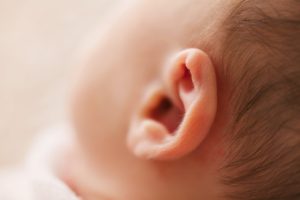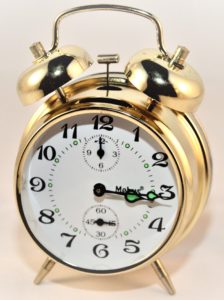My younger son recently got ear tubes. It’s a very common procedure. It’s estimated that about 80% of children will have at least one ear infection by the age of three. Relatedly, about 7% of children have ear tubes by age three. My older son only had one ear infection by the time he was three, but my younger son had four by the time he was a little over one, which is why we ended up getting him tubes. Just a note of caution here. There can be a tendency for ear tubes to be overdone. If you do a simple online search of “ear tubes necessary” or “ear tubes overused”, you’ll get lots of articles from reputable organizations addressing this. So, just do your homework before jumping into it.
While ear tubes are very common, there were some aspects of the whole process that surprised my wife and me. So, here is an ear tubes 101 walkthrough of our experience.

Initial ENT (Ear, Nose, and Throat) Appointment
After doing our own research and speaking with other parents and our pediatrician about our son’s history of ear infections, we determined it was appropriate to contact an ENT office. Ultimately, the ENT office will provide important information and advice as well.
Hearing Test
Before going forward with the ear tubes procedure, we first had an initial visit, which I imagine is standard practice. The first thing that took place at this visit was a hearing test. We were placed in the middle of a sound proof room and the audiologist would initiate a variety of sounds and volumes from different directions. Upon hearing the sound, our son would turn towards it. The audiologist would reward our son’s correct identification of the sound by lighting up a little toy like a stuffed animal from where the sound came from. The whole test probably lasted about five minutes. Personally, I found the test to be quite entertaining.
Meeting with ENT Doctor
Upon completing the hearing test, we met with the ENT doctor. Just to be clear, the hearing test and this meeting were part of the same appointment. The ENT doctor asked us about our son’s history. These included general questions as well as specific questions related to ear infections. He then provided us his thoughts, which in our son’s case was that ear tubes made sense. He followed up by explaining details about the procedure including showing us an actual ear tube, which was tiny. For infants and toddlers, the ear tubes are usually less than a couple millimeters.
Scheduling Surgery for Ear Tubes

The next step was to schedule the date for surgery. Of course, the timeframe to getting scheduled will depend on your hospital and doctors. The general timeline we were given was about a few weeks. Our initial ENT appointment was on Aug. 7 and the earliest appointment we were able to get was on Aug. 28. With my wife and I both being teachers and returning to work that week, the date wasn’t ideal. Here’s a tip…keep calling as slots may open up. While it’s no guarantee, what’s the harm in trying? It took us two or three tries, but we were fortunate to get an appointment a week earlier on Aug. 21.
An interesting aspect of scheduling the surgery is that we were not given a specific time for the surgery. I’m not sure if this was unique to the hospital we used or a standard practice with ear tubes surgery. What was communicated with us is that we would receive a call a couple days before the surgery day with a specific time. Apparently, it depends on other scheduled procedures that day as the hospital takes the youngest kids first and proceeds from there.
The Day Before Ear Tubes Surgery
The most surprising aspect of the whole process for my wife and me was the preparation the day before surgery. Ultimately, we were given a report time of 9:15am for surgery to follow shortly after. The directions given to us was that our son could not eat solids past 1:15am – 8 hours prior. Milk had to stop by 3:15am – 6 hours prior, and clear liquids had to stop by 7:15am – 2 hours prior. After 7:15am, he should not have anything to eat or drink. We knew it is pretty standard for there to be food and drink restrictions before anesthesia. I just don’t think we thought it would be such a long stretch for a toddler for a pretty quick surgery.
And realistically, our son is asleep by 8:00pm, which means he’s not really eating food past 7:00pm. By the time he wakes up around 6:30am, he was only going to be able to have a little of clear liquids. In other words, our son would have to go about 17 hours between eating – from 7:00pm until around noon the next day when the surgery was done. We actually considered whether we should wake up our son before 1:15am to give him some food (and some parents probably do this), but we ended up deciding that good sleep was more important before surgery.
Spoiler Alert!
It ended up working out fine. We gave our son some Gatorade around 7:00am to get some calories in him before the 7:15am cutoff. We left for the hospital around 8:30am and once we got there, our son was distracted enough until the surgery time. This food/drink restriction was definitely daunting and honestly the most stressful part of the whole process. In fact, the ENT office person who called to walk us through the food/drink restrictions even said that the restrictions won’t be fun. Fortunately, it worked out well for us, but it’s certainly an aspect you want to be aware of and have a plan for ahead of your child’s surgery for ear tubes.
Ear Tubes Surgery Time
Once our son was called back to the surgery area, the process was smooth and relatively quick. There was a slight delay due to a backup of other procedures, but once our son was taken away for surgery, the surgery was done in about 15 minutes. After surgery, he was asleep for about 45 minutes before waking up (though the nurse really woke him up). He was then given some sugar water. Upon discharge, there were no restrictions we were given in terms of food or drink besides making sure he kept what he ate and drank down. From the report time of 9:15am to discharge, was about 3 hours. If you’re interested, here’s a diagram showing the ear tube’s placement in the ear.

Ear Tubes Post Surgery
There was nothing exciting post surgery, which was a good thing. Our son ate and slept generally the same the rest of that day and night. We were given ear drops to give him for a week after surgery. For us, it was five drops in each ear. We brought him into daycare the following morning as usual and he had a normal day.
If you had some questions or confusion about ear tubes surgery for your child, I hope this gives you a better idea of what to expect. I believe our experience was pretty typical, so I hope yours goes smoothly too if you are heading down that road.
Please feel free to share any thoughts via the comments below.